Dying your hair blue is a bold statement. But perhaps you made a mistake; it’s not for you, or you’re over it now and looking for another transformation. The question is, how easy is it to dye over blue hair, and what are the best colors to dye over it with?
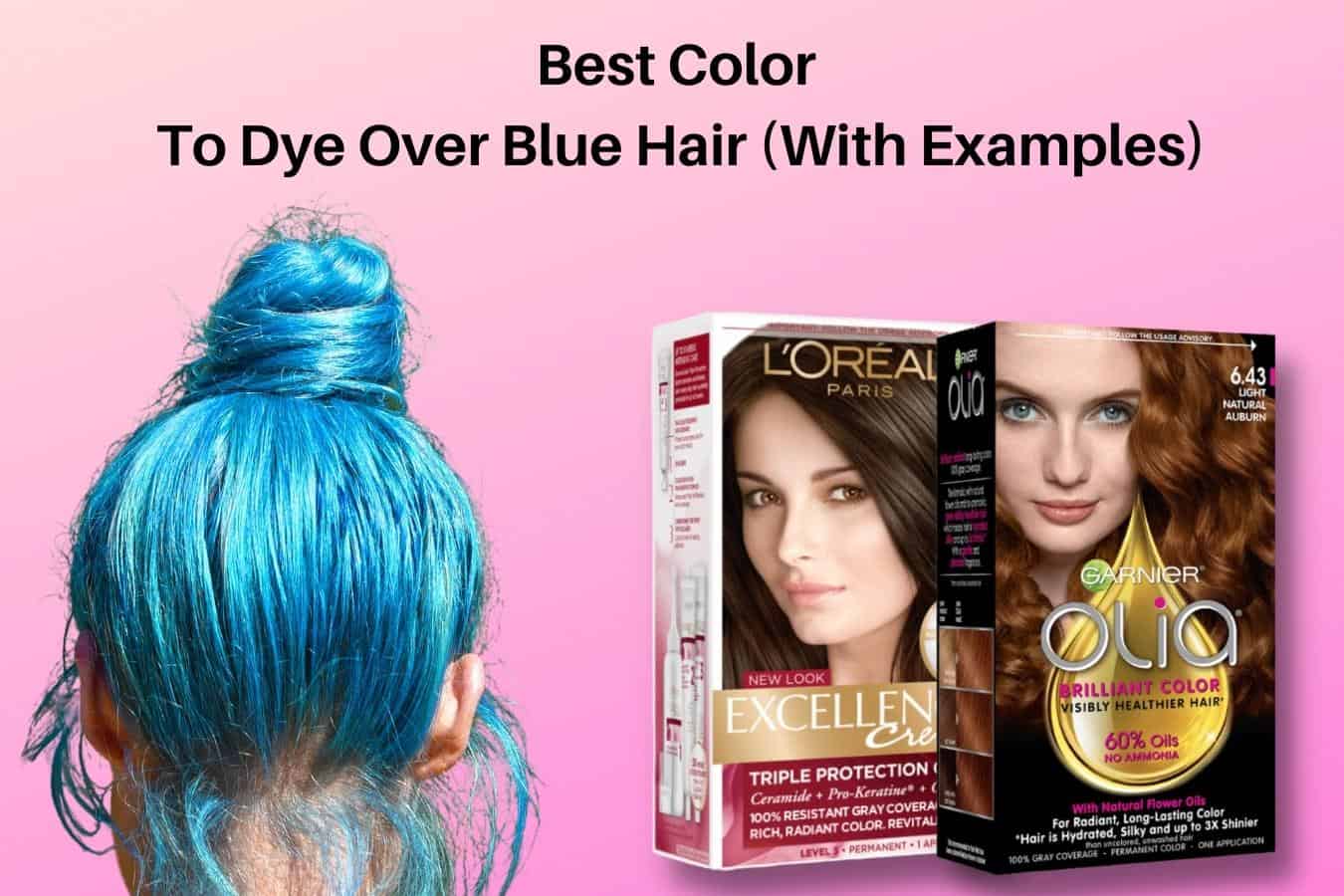
What Is The Best Color To Dye Over Blue Hair?
The best color to dye over blue hair is orange. This is because orange is the opposite of blue on the color wheel and any orange-toned color will work best to cancel out blue tones in the hair.
Why is orange dye the best to cover over blue hair?
Orange tones include colors such as copper, orangey-red, brunette with orange tones, or a dark copper blonde.
These are the best colors to dye over blue hair because they will ensure that the blue in your hair is completely covered. This is because orange cancels out the blue in your hair as the two colors sit opposite each other on the color wheel.
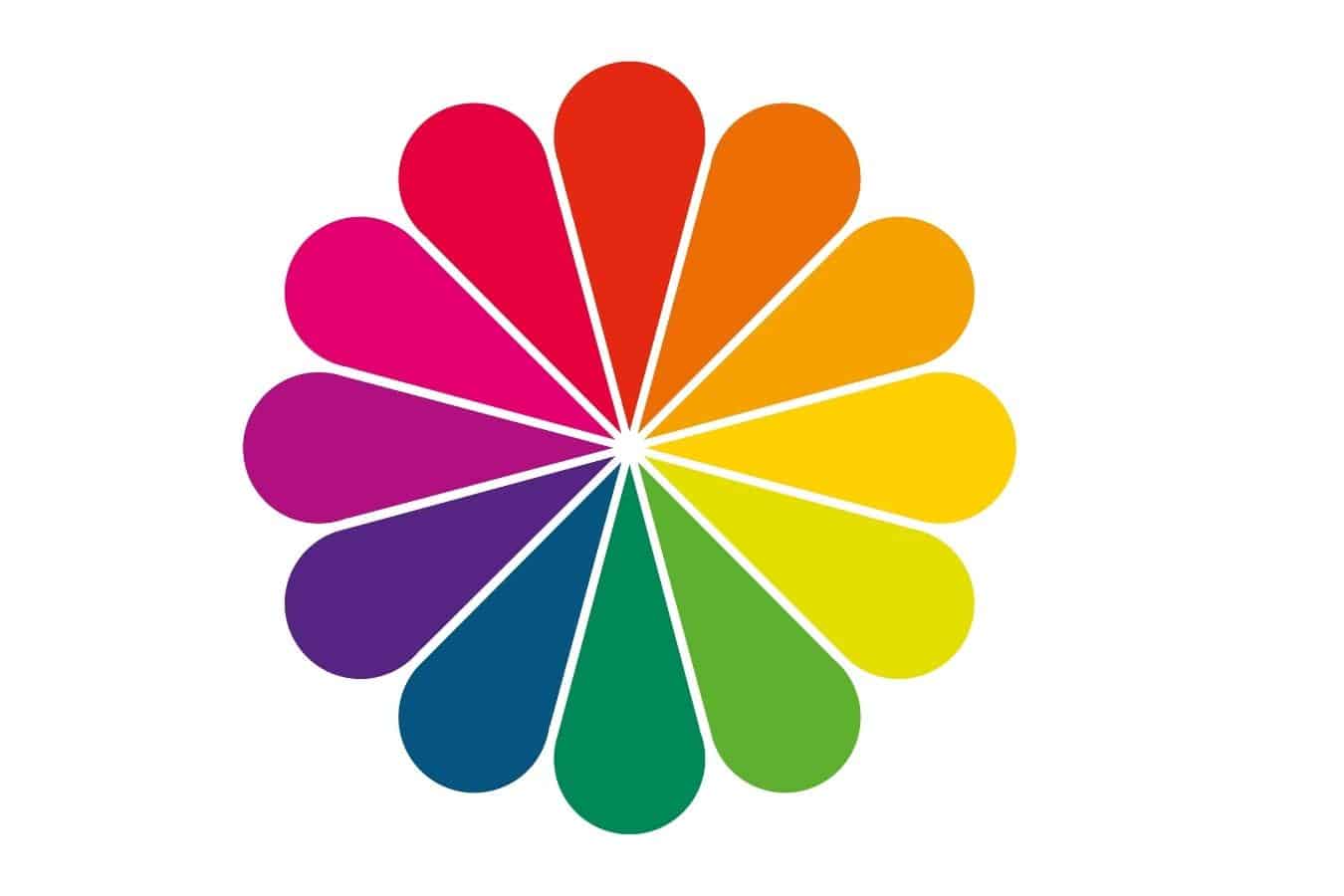
Using an orange dye over blue hair will help neutralize the blue color and will even out the shade.
how to cover blue hair in 3 easy steps
Dyeing your blue hair with another color is no different than using regular hair dye, however, there are 3 key steps to follow:
- Dye your hair with a red color with orange undertones
- Follow up with an Olaplex treatment
- Dye your hair brown
The Olaplex treatment is very important as it will speed up the process of restoring your hair back to its original state.
These are the products I’d recommend you use (from Amazon):
If you have very bright blue hair, it may be worth doing a bleach wash first, however, your hair must be in good condition. If not, the bleach can easily damage your hair and you’ll be worse off than before.
Usually, the 3 step method below should do the trick:
Step 1: Dye your blue hair with an orange or red color
- Open the hair dye kit, put on the gloves, and mix the dye with the developer
- Section your hair
- Start from the front top of your hair and slowly move backwards. Ensure the dye is massaged into your roots
- Move through each section, making sure you’ve covered the front of your hair near your ears and any areas that are very blue
- After all of the dye has been applied, let it sit for anywhere between 20-40 minutes.
- Rinse out the dye and use a gentle conditioner.
Step 3: Dye your hair with a brown hair color
Repeat the instructions from step 1 using the brown hair dye.
If your hair still has tones of blue after following these steps, wait a week for the dye to settle and be washed out, and then re-color your hair with the same brown dye again.
what Other colors cancel out blue hair?
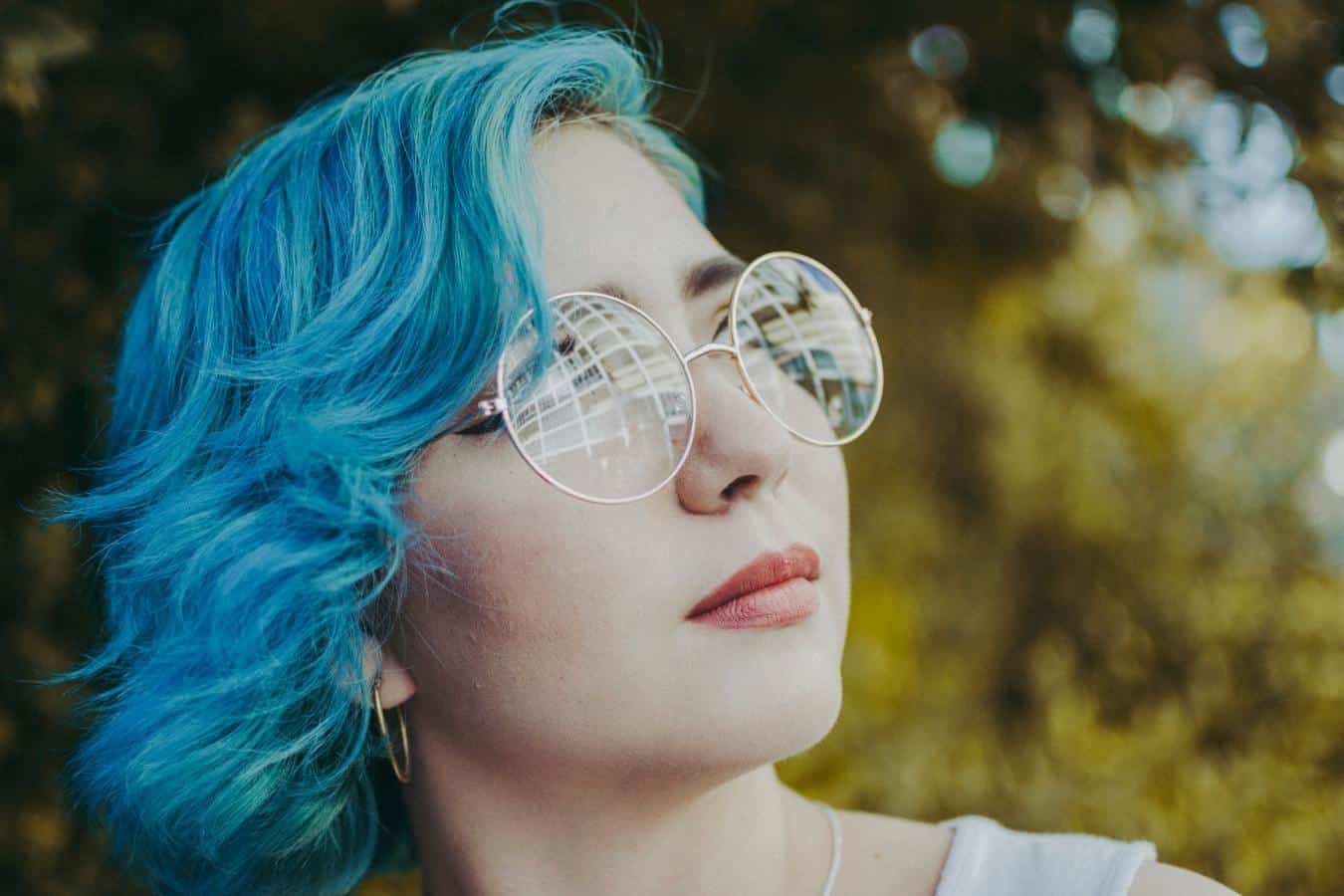
Although orange is the best color to cancel out blue hair, you may want a different shade altogether. Perhaps you want a darker hair color or you are planning to go blonde.
Strickly speaking, any color that sits in the opposite direction of blue will do a good job of canceling out blue hair. So for example red may also do a good job of covering over blue hair, but green won’t make much of a difference.
Darker colors will of course work too. They may not cancel out blue hair but they will cover the color.
Can I use Red Hair Dye To Cover Blue Hair?
Red hair dye has a lot of pigment, so it should do a good job of covering up the blue hair dye.
However, if you want to be absolutely sure this will work, make sure your blue has faded out a bit first, and use a permanent red dye over the top of the blue.
If you use a semi-permanent dye, you may end up with more of a purple color (since red and blue make purple).
So, to be sure you get a pure red instead of a purple tone, use a permanent dye.
If you want to use a semi-permanent red dye, you may have to wait a while for the blue to fade.
Can I use Brown Hair Dye To Cover Blue Hair?
Brown hair dye is one of the best colors you can use to dye over blue hair.
Shades of brown with orange in their composition are especially good if you want to cancel out the blue tones.
But even if you choose a cool-toned brunette to go over the blue, any blue tones still coming through will contribute to a beautiful overall cool-toned effect.
Just make sure that the shade of brown you choose is dark enough to cover your current shade of blue.
Can I use Black Hair Dye To Cover Blue Hair?
Black hair dye does a good job at covering blue hair. But please bear in mind that many black hair dyes have a blue base.
So, you won’t cancel out the blue by dying your hair black; you will just darken it significantly.
If you want to cancel out the blue hair color, aim for a black hair dye with reddish undertones.
Can I use Blonde Hair Dye To Cover Blue Hair?
Generally speaking, blonde is not the best color to dye over blue hair. It is simply too light.
The one exception is if you let your blue hair dye fade first and then dye over it with a dark copper blonde tone.
The copper tones in the dye will neutralize the blue.
Can I use fantasy Hair Dye Color To Cover Blue Hair?
If you’re not ready to go back to natural colors yet, you could choose another ‘fantasy’ shade.
If you want to dye over blue hair, you need to choose shades that are darker, unless you want to bleach your hair again, which is a whole other process.
The best fantasy colors to dye over blue hair are purple, green, and aquamarine.
This is because all of these shades have blue in their composition, so they’ll cover up the blue nicely.
For best results, make sure your blue has faded first, so your new color will look even.
And choose darker shades of purple, green, or aquamarine, as these will do a better job of covering up the blue.
Things To Know Before Coloring Over Blue Hair
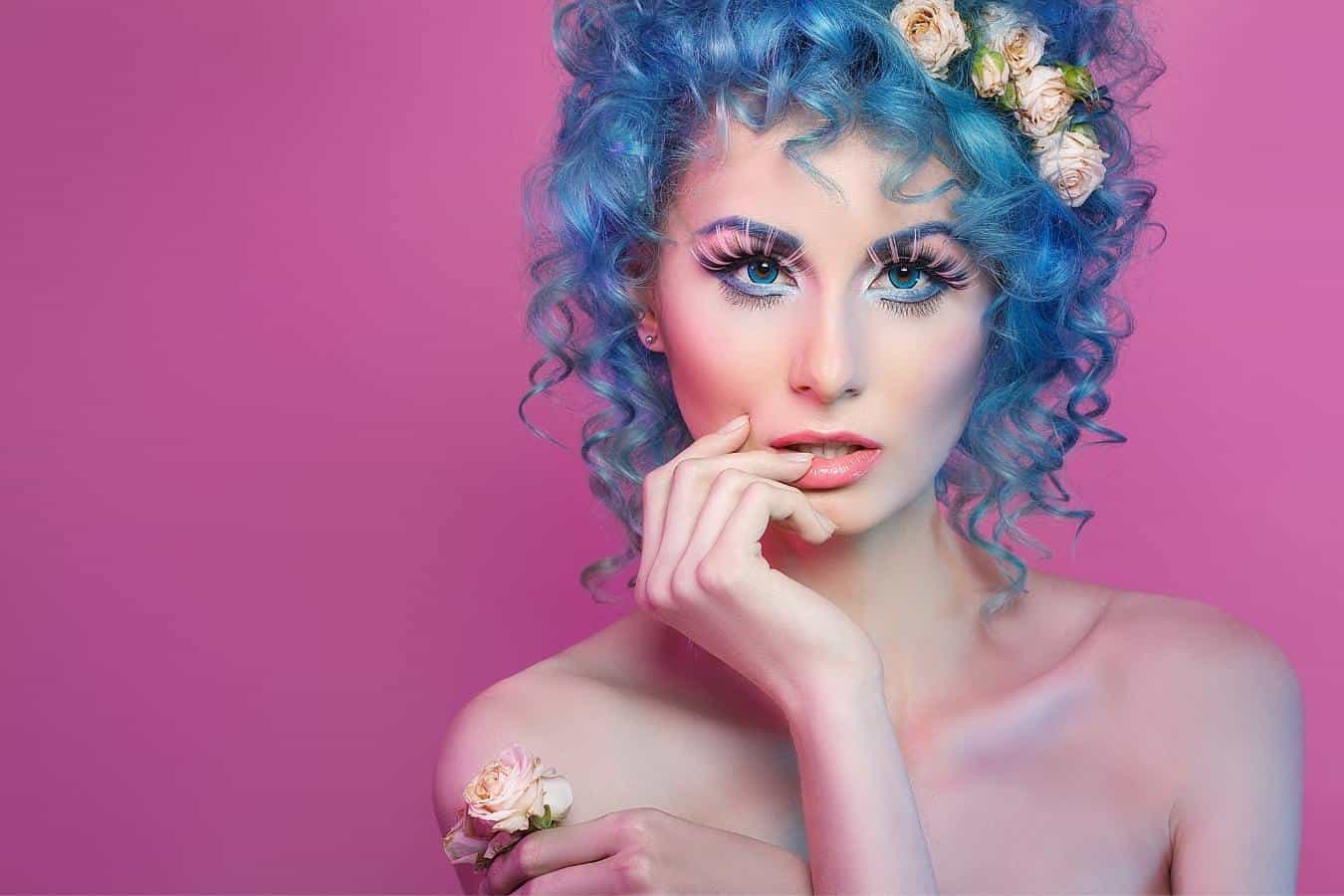
1. Results Vary Depending On How Much Blue You Have Left
This is important. How much of the blue pigment you have left in your hair will affect your final outcome, and also influence whether you should use permanent or semi-permanent dye.
If the blue is quite faded, you can get away with using a semi-permanent dye, which is less damaging for the hair, but of course, won’t last as long.
If you still have a lot of blue pigment in your hair, you’ll get better results from dying over it with a permanent color.
Why is this?
Permanent hair dyes contain peroxide and are applied using a developer. These lift the hair cuticle to deposit the new color inside.
Semi-permanent hair dyes do not use developer and so the color result is not as strong. They will wash out faster too.
So, if you have a lot of blue pigment left in your hair, it’s likely a semi-permanent dye won’t cover the blue effectively.
If you want to use a semi-permanent dye, it’s important to make sure the blue in your hair has faded for the best results.
2. Do You Want A Permanent or Semi-Permanent Change?
Another important question to ask yourself is whether you want the color shift to be permanent or semi-permanent.
This may also depend on other factors, such as how much blue is left in your hair, the health of your hair, and what sort of color you want.
For example, many ‘fantasy’ colors, such as purple and green, tend to come as semi-permanent dyes, whereas with more natural colors you have the option of going permanent or semi-permanent.
3. What Condition Is Your Hair In?
Your hair’s condition should influence the choice you make. Is your hair soft and healthy? Or is it dry and frazzled by chemical processes and heat styling?
Did you need to bleach your hair before dying it blue? If so, you should be especially careful to consider whether your hair can withstand more aggressive chemical processes.
It may be that your hair needs a break of a few weeks to recover, or at the very least, it needs a deep conditioning treatment before applying a permanent hair dye.
This will help to strengthen the hair and help it withstand the chemicals in the dye.
If you want to bleach your hair again before applying the new color, it is especially important to make sure your hair is in good condition, otherwise, your hair may be severely damaged by the bleaching process.
If your hair is breaking easily, it needs some TLC before you bleach it again.
Other ways to cover up blue hair
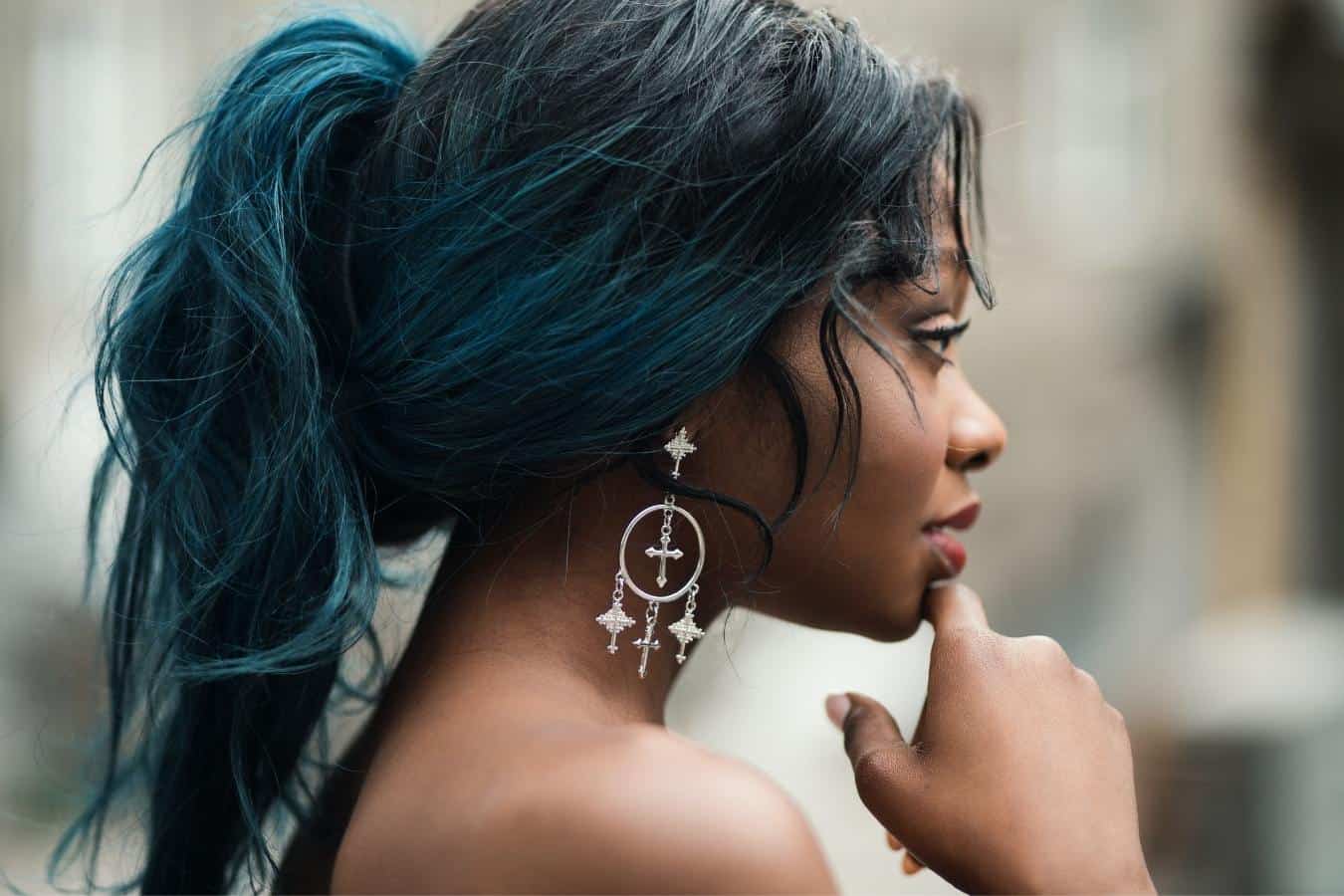
Here are a few ways to try and remove blue hair dye from your hair:
1. Color Remover
Color remover is a very effective way of removing hair color.
However, it is only suitable for permanent hair color, so if your blue hair dye is semi-permanent, you will have to let it fade or dye over it with another color.
2. Bleaching
Bleaching the hair is not an ideal way to remove blue color from the hair.
For one thing, you may not get the results you hoped for first time, as bleaching blue hair may make your hair turn a strange color or just a paler shade of blue.
Secondly, bleaching is extremely damaging to the hair, especially if you originally bleached your hair before dying it blue. In this case, you’ll just be adding further damage to the hair.
3. Use A Neutralizing Color
As discussed earlier, a little knowledge of color theory can help you cover up that pesky blue in your hair.
Just as you might use an ash-based dye to cancel out orange undertones in platinum blonde, if you want to cancel out blue tones in your hair, choose an orange-based color.
This could be copper, a brunette with orange undertones, or even pure orange itself.
The resulting color may not always be what you expected. For example, it may be darker or more orangey than you hoped, but one thing is for certain, if you choose an orange-based color, the blue will be gone.
You can then take steps to achieve your desired shade by dying your hair again if you are not happy with your current color.
3. Use Clarifying Shampoo/Anti-Dandruff Shampoo/Dish Soap
Sometimes, just letting the blue color fade with each wash is the safest and easiest way to remove blue color from your hair.
To speed up this process, you can wash your hair with clarifying shampoo, anti-dandruff shampoo, or even dish soap.
Why? Because all these cleansers have a higher concentration of sulfates than normal shampoos, meaning that the blue color will be stripped out of the hair faster.
Regular use of these high-sulfate cleansers may also mean that moisture is stripped from the hair faster too, so be sure to condition afterwards and use regular deep conditioning treatments.
4. Get A Haircut
It might sound drastic, but there are times when getting a haircut might be the best way to deal with your blue hair dye.
You may be in a position where you can simply have the blue bits cut off, or if you grow out your roots, you can have a nice blue ombre effect.
If you want a new style, you may find that you like the blue color better with a different cut.
It’s surprising what difference a haircut can make to your overall look. And, if you have it cut, there will be less blue to deal with.
Getting a haircut is one of the least damaging options for the hair, but admittedly, it’s not the quickest way if you’ve dyed your whole head blue.
Combining this method with letting the blue color fade is the safest option for your hair health.
Frequently Asked Questions (FAQ)
No, you cannot use blonde box dye to remove blue hair. You will likely end up with light blue hair that is damaged from the bleach. Instead, use an orange toner or hair dye.
The hardest color to remove from hair is darker colors such as red, black, and brown. Vibrant red color is quick to fade but it can be very difficult to remove completely from your hair.
Black and brown hair color fades the slowest due to the dye molecules that penetrate the hair shaft. You can let your hair grow out or use toner to lighten the color if needed.
References
A Definitive Guide To Every Olaplex Product
https://www.glamourmagazine.co.uk/article/olaplex-hair-treatment-benefits-and-how-to-use
How to Strip Unwanted Hair Color Safely
https://www.healthline.com/health/stripping-hair
22 Tips to Hydrate and Repair Hair After Bleaching
https://www.healthline.com/health/beauty-skin-care/how-to-hydrate-hair-after-bleaching
Why Bleaching Wrecks Your Hair (And How To Make It Better)
https://www.washingtonpost.com/news/speaking-of-science/wp/2015/01/23/why-bleaching-wrecks-your-hair-and-how-to-make-it-better/
Disclaimer: This site is not intended to provide professional or medical advice. All of the content on LovedByCurls.com is for informational purposes only. All advice should be followed at your own discretion. Ingredients may change at any time so always check the product label before using. Check our full disclaimer policy here.

